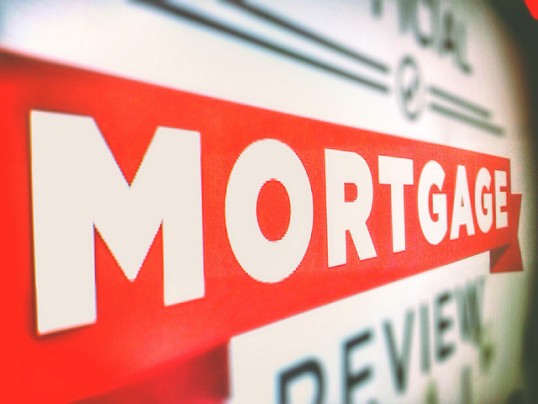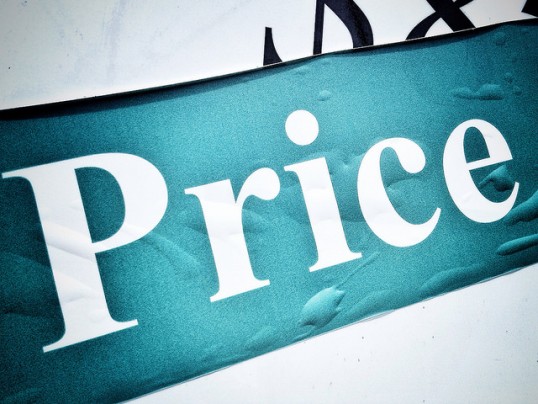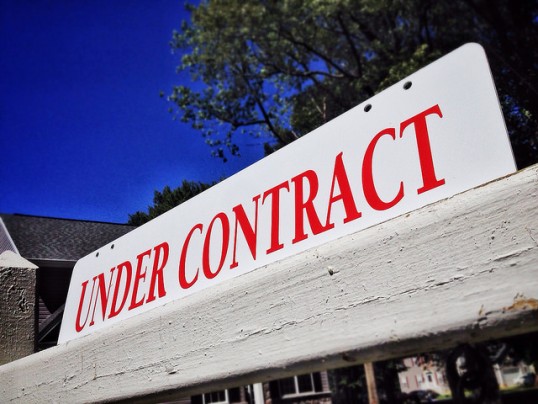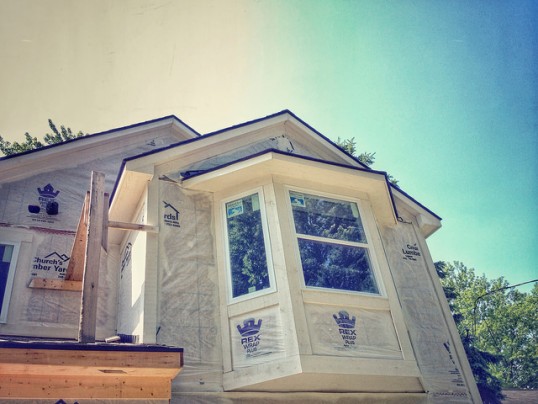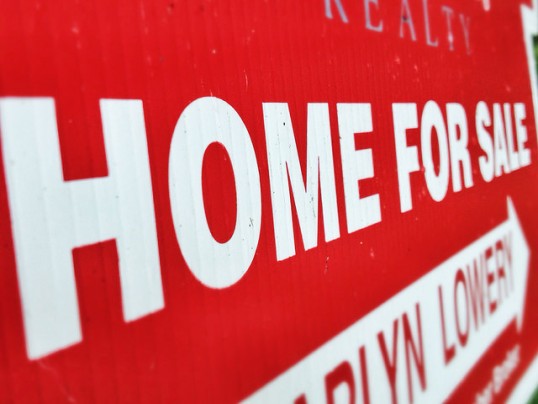According to the Mortgage Bankers Association’s Weekly Applications Survey, the average contract interest rate on 30-year fixed-rate mortgages with conforming loan balances remained unchanged last week from the week before. Rates were also flat on loans backed by the Federal Housing Administration and 15-year fixed-rate mortgages. Mortgage rates increased slightly on jumbo loans. With rates largely unchanged from the week before, demand for loans to buy homes rose 0.2 percent on a seasonally adjusted basis. On an unadjusted basis, purchase demand was up 1 percent. Refinance demand, on the other hand, fell 4 percent, after rising 4 percent the previous week. Because of the drop, total mortgage demand was down 2.2 percent for the week. The MBA’s weekly survey has been conducted since 1990 and covers 75 percent of all retail residential mortgage applications. More here.
Archive for July 2014
Home Price Increases Continue Slowdown
The S&P/Case-Shiller Home Price Indices – considered the leading gauge of U.S. home prices – show increases continuing to slow. According to the most recent release, home prices rose 9.3 percent year-over-year, down from the 10.8 percent increase reported in the last release. David M. Blitzer, chairman of the index committee at S&P Dow Jones Indices, said home prices rose at their slowest pace since February of last year. The slowing pace of price increases is due, in part, to rising inventory levels as more homeowners put their homes up for sale. Still, Blitzer says recent housing data has been mixed, with prices and existing-home sales showing improvement while new home sales and construction lag behind. However, with continued improvement in the broader economy and job market, most analysts believe housing activity is going to pick up through the end of the year. On a month-to-month basis, home prices were up 1.1 percent. Also, all 20 cities included in the index posted increases for the second-straight month. More here.
Pending Sales Slip But Remain Above Average
The National Association of Realtors’ Pending Home Sales Index measures the number of contracts to buy homes that are signed each month. In June, the index dropped 1.1 percent, though it remains above 100 – which is considered an average level of contract activity. The decline follows three straight months of improvement. Lawrence Yun, NAR’s chief economist, said the housing market is stabilizing and activity is notably higher than earlier this year. According to Yun, price appreciation has decreased to its slowest pace since 2012 as inventory levels have increased. Because of this, Yun expects home sales to pick up during the second half of the year with more potential buyers considering homeownership as prices normalize and rent continues to rise. However, there are still areas of the country where inventory is low and conditions may deter potential buyers from taking advantage of today’s favorable mortgage rates. Regionally, pending sales were up in the Midwest, flat in the West, and down in the Northeast and South. More here.
Economic Forecast Sees Housing Gains Ahead
The first quarter of 2014 was the worst in five years, according to Fannie Mae’s Economic & Strategic Research Group. That, combined with only a moderate pickup during the second quarter of the year, means economic growth was essentially flat for the entire first half of this year. But despite the slower than expected first half of 2014, economic and housing market activity is expected to pick up through the end of the year. Doug Duncan, Fannie Mae’s chief economist, says housing data continues to point to a modest rebound in the market. According to Duncan, the spring and summer sales season has contributed to recent improvements in housing activity but, despite the gains, the group expects total home sales will not be able to overcome the slow start to the year. Fannie Mae has forecast that total home sales will decline by about 2 percent this year from last year’s totals. Still, an expected increase in economic activity and consumer spending, combined with improvement in the labor market and personal income, bodes well for continued acceleration in growth for both the general economy and housing market. More here.
New Home Sales Fall In June
New estimates released by the U.S. Census Bureau and the Department of Housing and Urban Development show sales of new single-family homes fell 8.1 percent in June. The drop was the largest in a year and put new home sales 11.5 percent below last June’s levels. Following two consecutive months of improvement and an 18.6 percent sales surge in May, the new estimates indicate that the housing market, though continuing to make progress, is still susceptible to an occasional month-to-month setback as it rebuilds momentum. Also in the report, the median sales price of new homes sold in June was $273,500; the average sales price was $331,400. The number of new homes available for sale rose 3.1 percent during the month, reaching its highest level since October 2010. At the current sales pace, there was a 5.8-month supply of new houses for sale at the end of the month. More here.
Mortgage Rates Mixed, Demand Rising
According to the Mortgage Bankers Association’s Weekly Applications Survey, the average contract interest rate for 30-year fixed-rate mortgages with conforming loan balances was unchanged last week from the week before. Mortgage rates on 30-year loans with jumbo balances and those backed by the Federal Housing Administration fell slightly, while the average rate on 15-year fixed-rate loans was up. With rates mostly flat from the week before, demand for mortgage applications increased 2.4 percent. The increase was the first in many weeks and was largely due to a bump in refinance activity. In fact, the Refinance Index rose 4 percent and, as a share of total mortgage activity, refinance demand accounted for 54.4 percent of all applications. The Purchase Index, on the other hand, only gained 0.3 percent from one week earlier. The MBA’s weekly survey has been conducted since 1990 and covers 75 percent of all retail residential mortgage applications. More here.
Existing Home Sales Hit 8-Month High
In June, sales of previously owned homes reached their fastest pace this year, climbing to a projected annual pace of 5 million sales for the first time since October 2013. The estimates, released by the National Association of Realtors, show existing-home sales up 2.6 percent from the month before and just 2.3 percent below year-before levels. Lawrence Yun, NAR’s chief economist, said housing fundamentals are moving in the right direction. According to Yun, home sales should continue improving in the coming months as inventory rises and price gains continue to moderate, giving potential home buyers more choices and more favorable affordability conditions. In fact, the number of homes currently available for sale is at its highest point in more than a year and home prices are just 4.3 percent above last June. Also in the release, sales increased in all four regions of the country, though the Midwest saw the biggest gains with a 6.2 percent improvement from the month before. The June sales report joins other recently released data detailing an improving outlook for the housing market after a tough first half of the year. More here.
